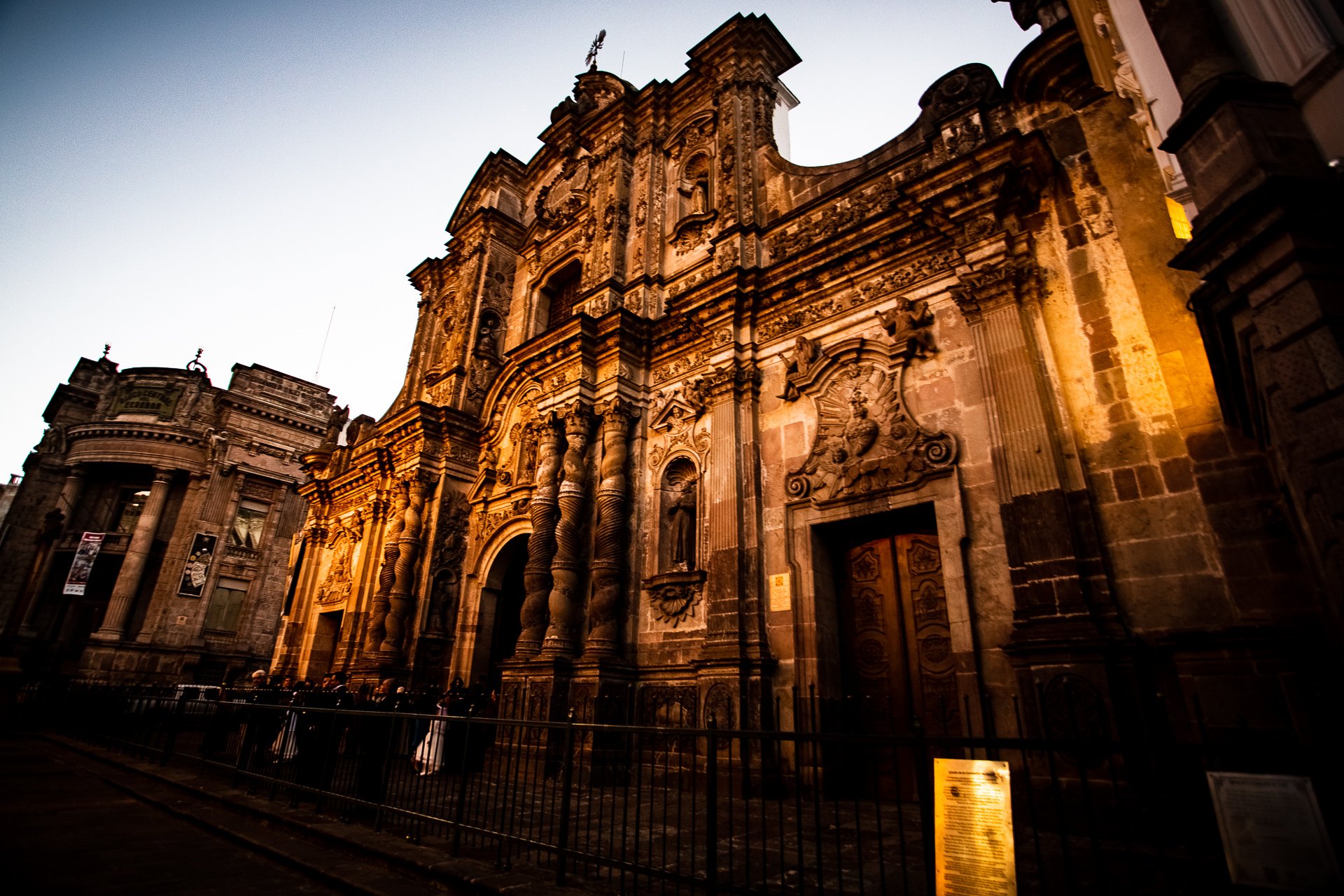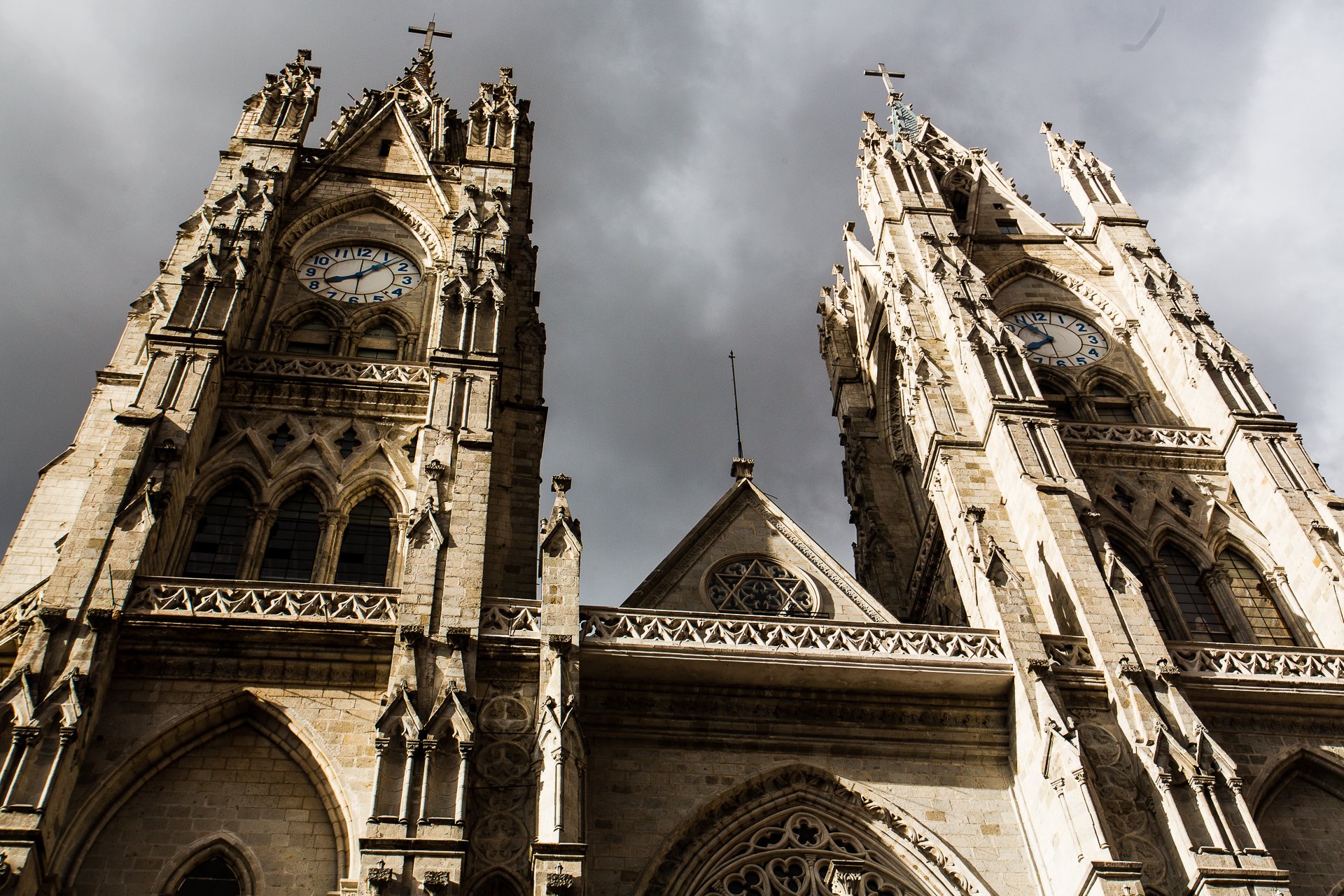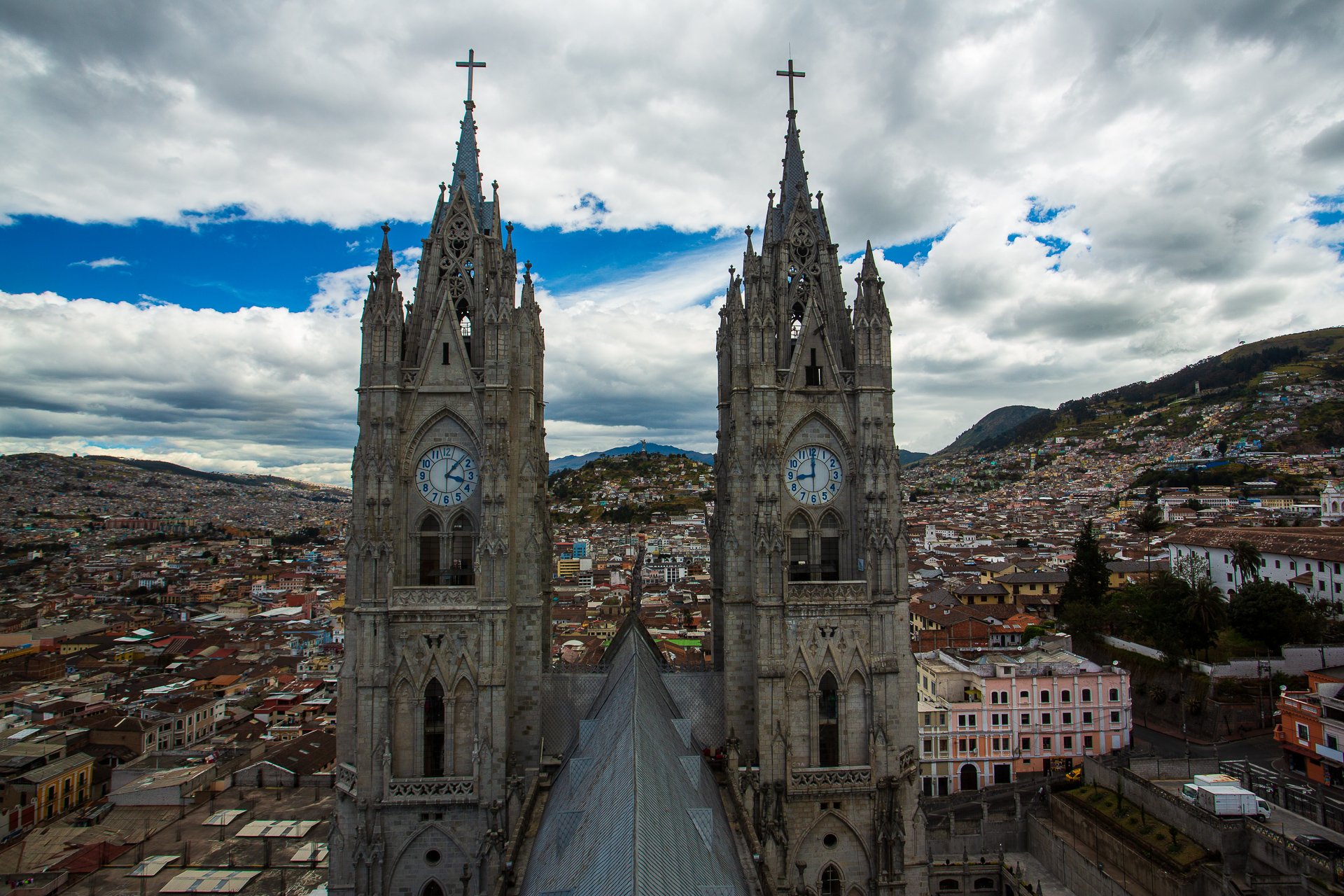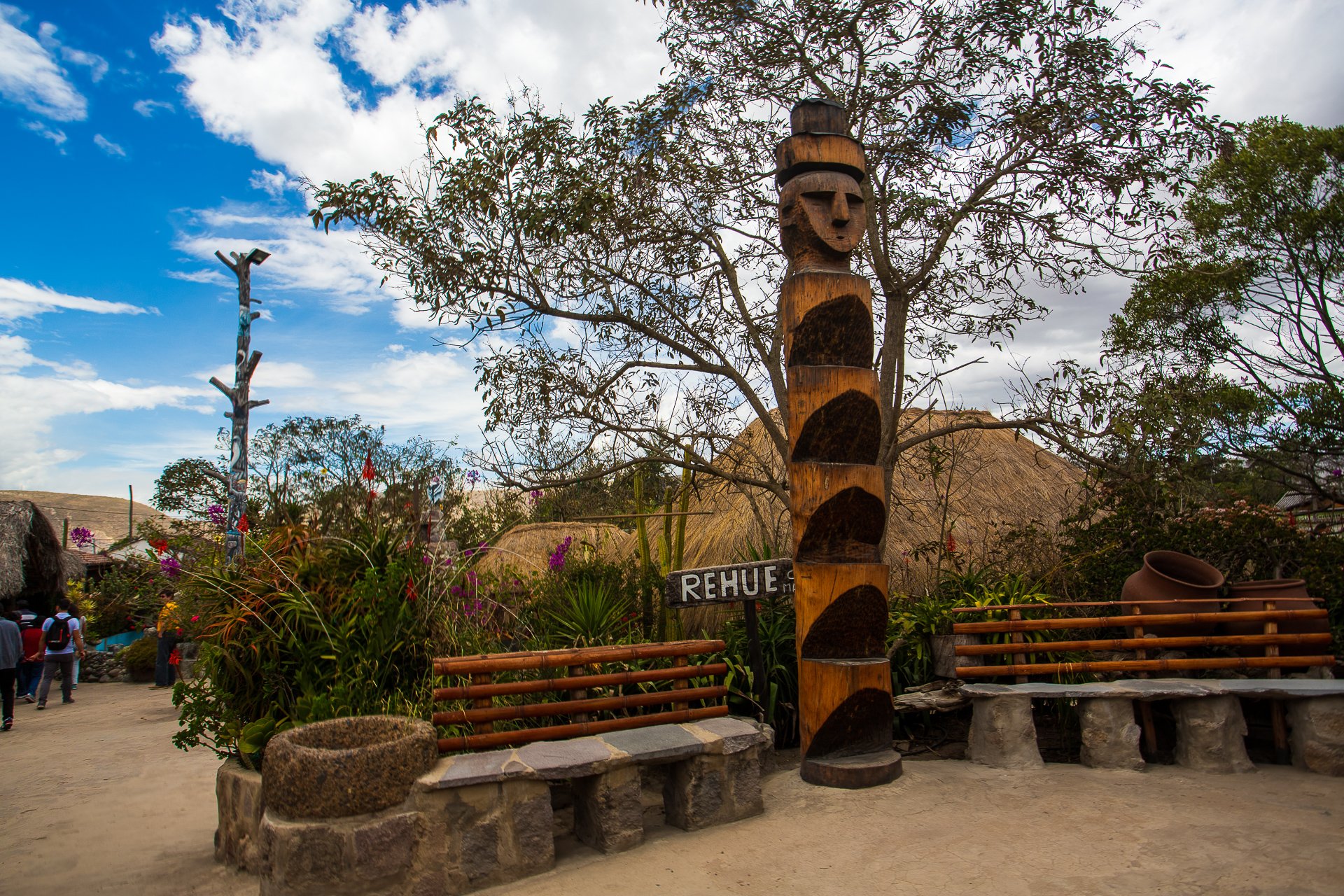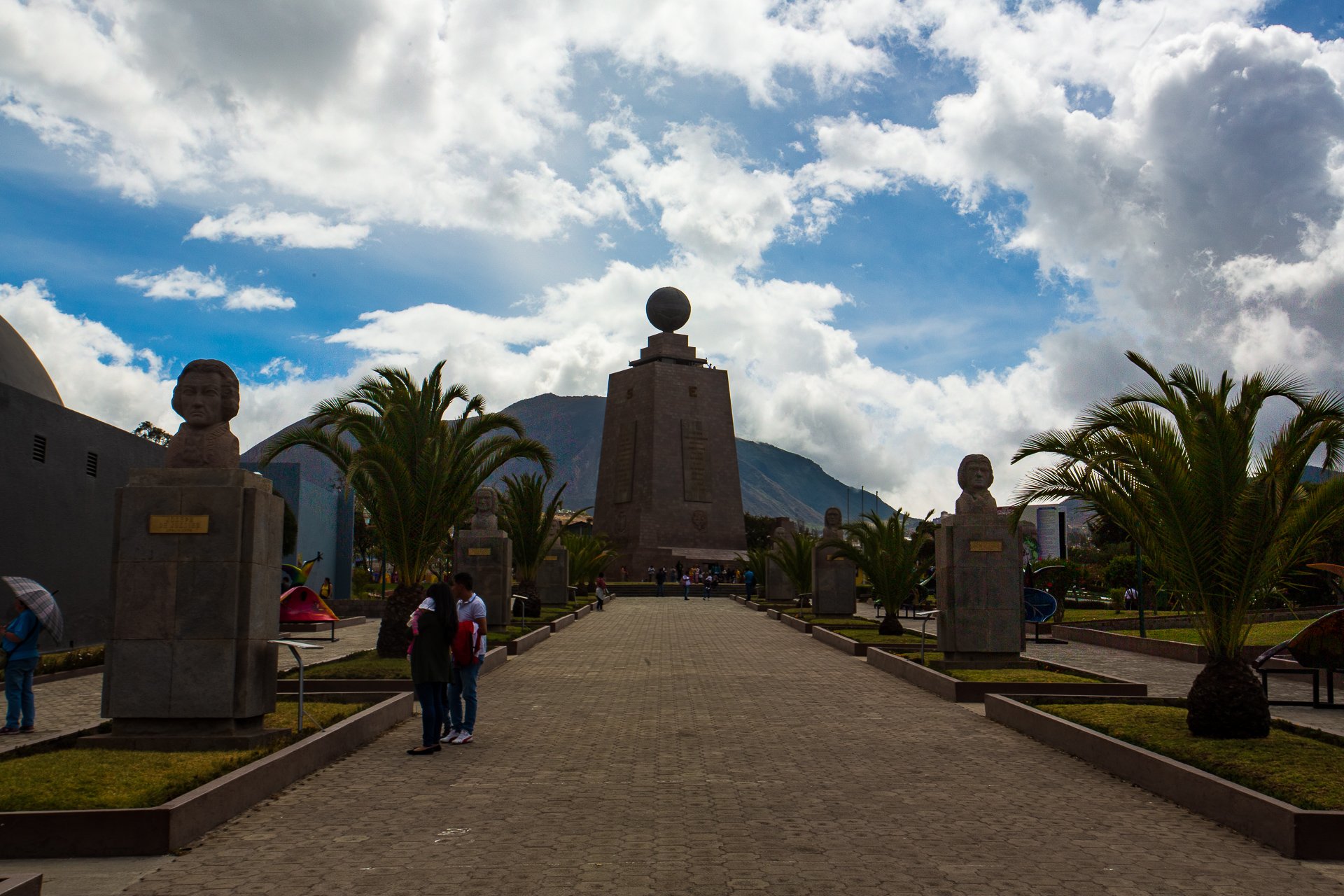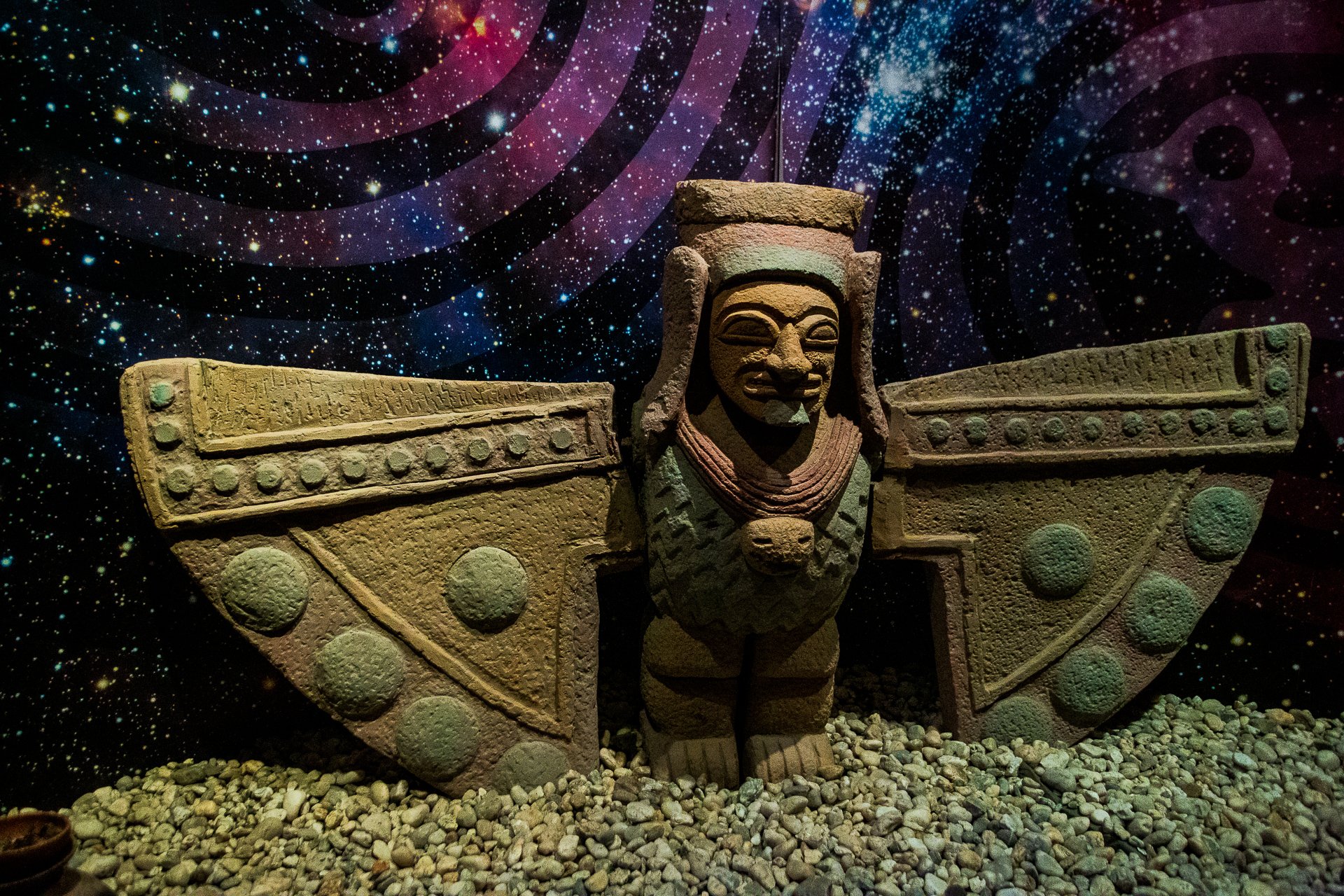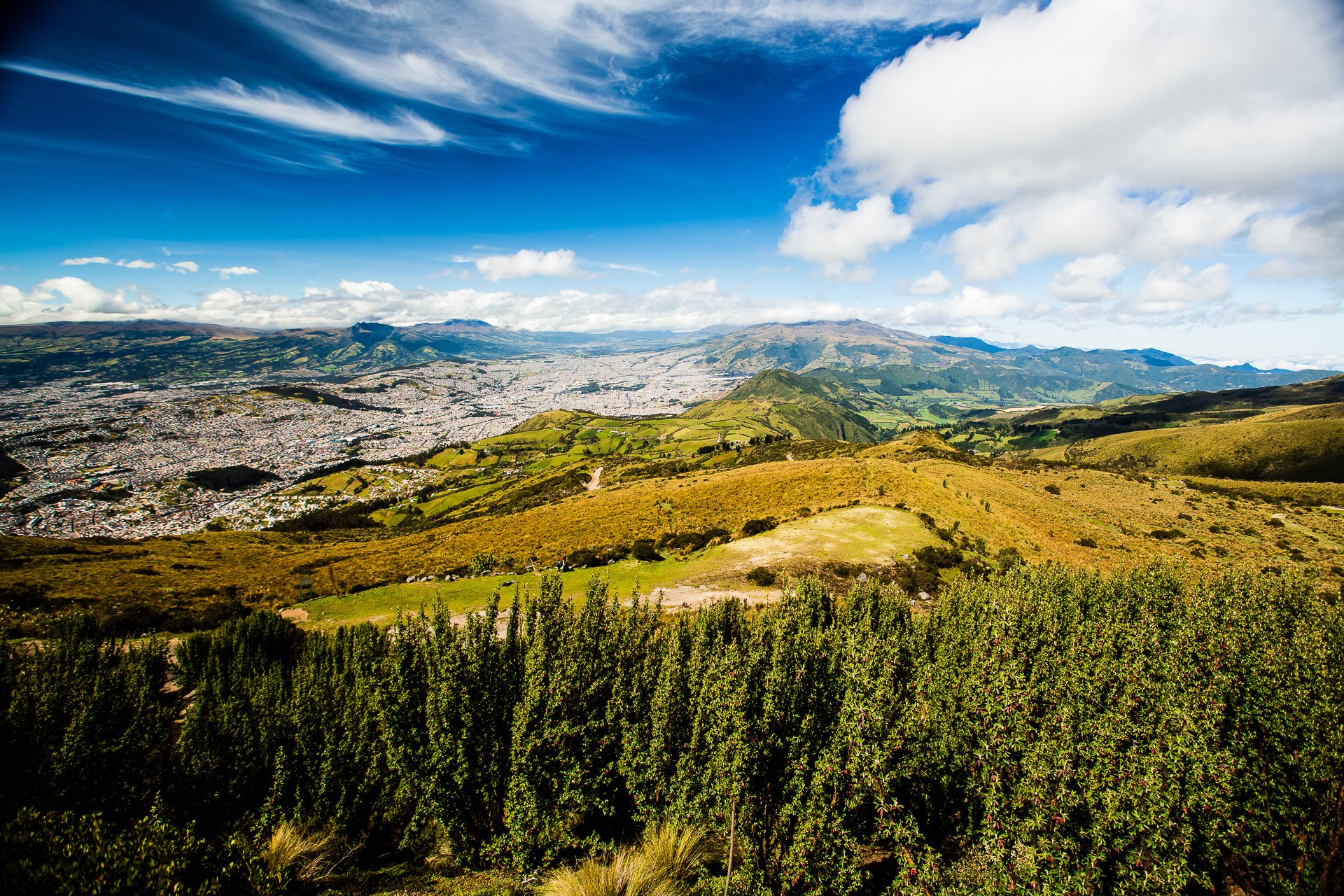Quito
The capital city of Ecuador, though in the shadow of the Galapagos islands as Ecuador's most famous location, Quito sits amongst volcanic hills, that rise around it. Turbulence from the strange layered landscape buffets every plane to fly into the airport. Quito itself is set 2,850 meters above sea level, and the volcanoes tower another two thousand meters above the city itself. Even in Quito, you can feel the altitude, distance walking and hills are more challenging than someone living in Sweden faces on a day-to-day basis.
The landscape is rippled, layered from the historical volcanic eruptions, so the city, sitting between the volcanoes is still a hilly place.
Graffiti is rampant throughout the city, but much of it is of incredible artistry, showing off the skills of the local artists, rather than the crude tags often seen on European walls.
Quito feels like quite a new town, with tall buildings, open parks, and broad streets, this is markedly different from the Old Town, set between El Panecillo statue and the Basilica in the north. Cramped crooked roads, many with cobblestones lead you through this part of the city. The area is quaint, and the shops and restaurants overspill their concrete and brick interiors onto the streets of La Rhonda. Old town has a reputation for danger, of the typical tourist kind, mugging or pickpocketing is comparatively common, and so keep an eye on your valuables and don’t stray too far from the main streets. Tourist Police are visible and present and keep everyone moving, but as night falls in La Rhonda and the drinks flow, caution is always sensible.
Sights & Culture
Plaza Grande
This large square near the centre of the old town is always lively with performances, musicians, and people just hanging out.
A large monument marks the centre of the square, with shops and cafes surrounding it, down one of the northern streets, the spires of the basilica can be seen.
Plaza Grande
Catedral Metropolitana de Quito
Catedral Metropolitana de Quito
At the southern end of Independence Square sits the Cathedral Metropolitan, a large impressive building, with cafes built into its ground floor.
Iglesia de la Compañía de Jesús
Iglesia de la Compañía de Jesús
The Church of the Jesuits is not far from the Plaza Grande, it is a sizeable opulent church, where a large local wedding was in progress during our time as we passed by. It is also one of the stops on the free walking tours of Quito.
Reserva Geobotánica Pululahua
Further to the north of Quito is a volcanic crater, formed when a volcano imploded. Your initial impression is of a valley with several hills around it, and it is only on reflection you realise you are standing on the lip of a volcano looking down into its interior.
People, being the same reckless brave lunatics in Ecuador as they are everywhere else are living on and farming the fertile ground in the base of this active volcanic crater, that will one day erupt again.
A bathroom, cafe, and handicraft store ring the viewing platform, and as the day goes on, the mist slowly fills the basin.
Reserva Geobotánica Pululahua
Basílica del Voto Nacional
Visible from quite a distance, as it is both monumental and at the summit of a hill, the Basilica of the National Vote is massive twin-spired Architectural marvel, perhaps the most impressive building to see in Quito.
You can, for a price, climb the Basilica’s outside and see the views over the city. Well worth doing, though make sure you’ve got a head for heights and don’t mind crowds.
In the spires, you will find a gift shop and a restaurant, though there is little to inform you of them until you find them.
Iglesia de San Francisco
Iglesia de San Francisco
The San Francisco Church is a large baroque church, with a well-appointed and well-used interior of artworks and sculptures. Next door, is a religious art museum with a gift shop combined with the ticket office selling a variety of deeply tacky religious icons.
Like many Latin American churches, there are several side chapels off the main chapel. These cubicles are for families who have donated enough, they can pray in relative privacy and comfort, while also ensuring they obtain the status of being seeing and being seen entering their family's private space. It is a jarring witnessing the opulence of the church when the entranceways are crowded with the needy.
Virgin of El Panecillo
The statue dominates the southern skyline in Quito and is visible through most of the old town. We took a taxi up to Panecillo on the hill, as the walk was quite long. Unfortunately, access to the interior was closed for a private event.
Even without going to the viewing platform, you get excellent views over the town.
Inspired by Bernardo de Legarda's sculpture of the 'Virgin of Quito', or 'The Dancer" crafted in 1734. The placard on the front, tells us the woman depicted is the Woman of the Apocalypse.
Museums & Galleries
Museo de Sitio Intiñan
“Exactly at the equator” they gleefully explain while giving a dismissive gesture to the Middle of the World monument nearby. This museum provides insight into the local lives of Ecuador’s native people, particularly the Shuar. We learned about the gruesome practice of shrunken heads, (something they definitely don’t do to people, even respected Elders anymore, despite how important it is in their religion) as well as seeing a small guinea pig farm.
Museo de Sitio Intiñan
There are also several demonstrations of the Coriolis effect, all false, as they are everywhere with the equator being something needing kilometres of distance to make a measurable impact for a person, but entertaining none the less. Surprisingly more or less identical to the experiments you see in Uganda’s equator.
Monumento Mitad del Mundo
Almost a theme park, the Middle of the World is an enclosed environment of shops, restaurants, and micro-museums.
The monument is at the end of the main street, and well-framed for photographs, surrounded by volcanic terrain. If you are willing to brave the queues, you can climb up to get views back over the park and landscape.
Monumento Mitad del Mundo
There is a small museum, using AR tech to bring to life the wildlife of the Galapagos. It is an excellent idea, but as we were travelling out to the Galapagos for much of our stay in Ecuador, it was of limited interest. The space reclaimed by having an AR solution allowed the museum to dedicate almost half its floor space to a shop.
Every half an hour, there is a show in the small planetarium, get there early as the queues can be very long.
Museum of the City
A lovely museum of a reasonable size, very close to La Ronda in the old town. The ground floor had a small exhibit on Bauhaus in the entrance space. The rest of the museum is in a double square of colonial houses around two central courtyards showing the prehistory and history of the city.
Museum of the City
Models show off how life would have been along with well-curated artefacts.
The staff are knowledgeable, but relaxed in their dress, one man wearing the Venom symbiote logo on his t-shirt.
Ethnic Fair Trade Shop
Huge, under the San Francisco Church and sharing space and ownership with Tianguesz Restaurant, the Fair Trade Shop, as its name exclaims is focused on selling Ecuadorian handicrafts through Fair Trade practices. Sculptures, weaving, foods and jewellery are all available at higher prices than you can find elsewhere, but with a more sustainable and beneficial ethic.
Worth visiting for no other reason than to explore the winding alleyways that make up the shop, forever finding new cubbyholes or spaces with unique produce.
Museo de Arte Precolombino Casa del Alabado
The Pre-Colombian Art Museum has a great setup in a hacienda with a cafe in the courtyard.
Museo de Arte Precolombino Casa del Alabado
Open courtyards with a lot of pre-Colombian works scattered throughout. It is well-curated, each room well lit and spacious, with a great deal of detail on each item.
Centro de Arte Contemporáneo de Quito
Further out of Old Town, past the Cathedral, the Centre of Contemporary Arts is a massive space, in something of a fork shape.
Centro de Arte Contemporáneo de Quito
There was little ongoing when we were in Quito. However, the LGBT+ Exhibit, with a particular focus on Trans rights and the struggle in Ecuador was interesting and took up much of one downstairs quarter.
A handcrafted canoe hangs from a ceiling but is kept in darkness. The windows are boarded up and reinforced from the outside.
Museo Etnohistórico de Artesanías del Ecuador Mindalae
The Ethnohistoric & Crafts Museum of Ecuador spreads across five floors working in conjunction with the Ethnic Fair Trade shop.
Unusually, there is a strong focus on textiles, something often tough to present as they rapidly decompose. The textile focus gives a particularly interesting structure to some of the floors, showing not just how items were made, but the final results for their construction.
Museo Etnohistórico de Artesanías del Ecuador Mindalae
Additionally, there are many masks used in traditional ceremonies mounted on the walls.
It is an exciting space, and the craft focus is unusual and worth your attention. There is a great deal of information offered in both Spanish and English on all the items on display.
Museo Nacional del Ecuador
The National Museum is also the National Theatre and was playing host to a graduation ceremony during the time of our visit.
Split over a couple of floors, with a lot of space, there was a particularly informative exhibit on at the time on gender identity in pre-Colombian Ecuador and how different perception of gender was before contact with Europe.
Museo Nacional del Ecuador
Museo de Historia Natural Gustavo Orcés
The Natural History Museum was closed when I went to visit, it is part of the sizeable polytechnic park, and set in an impressive concrete building with a striking profile.
Restaurants & Bars
Inty Raymi
A good, but touristy restaurant set in the Middle of the World park, it offers a wide selection of local foods like corn and pork, or for a premium, roast Guinea Pig. Service was attentive, and the food was both tasty and plentiful.
Bohemia
A pizza restaurant in the middle of the old town in La Ronda, it is made up of several rooms in an old stone house, as many of the restaurants on this famous street are. The pizza was great, though the service was slow, something the staff were extremely apologetic about.
Worth the wait.
Maliki Cafe
Part of the City Museum, we had to wait fifteen minutes for the espresso machine to heat, but its a pleasant space, light and modern with a strong bohemian vibe to it.
Tianguez
Tianguesz has a tourist flavour to it, set in the San Francisco plaza and the basement of the Church. The food is all local, the menu is relatively diverse, and the staff are efficient.
De Joel
A local cafe/restaurant which offered a variety of local foods in a typical stone building. Not particularly unique from the other similar spaces along La Ronda, it still provides a filling local meal.
Sports & Activities
TelefériQo
A short drive outside of the centre of the city is the cable car taking you up the Rucu Pichincha volcano. You are taken about 2.5km and rise to a height of 3,947m, passing through three micro-climates as the atmosphere changes.
At the top, there are several viewpoints, horseback riding, biking, climbing, camping and hiking. Approximately eight hours hiking will get you to the peak of the volcano. A challenging hike, even ignoring the effects of low oxygen.
My companion vetoed doing the hike spontaneously saying we were not prepared, had no water, gear and would be going to approximately 5,000 meters without experience. He was likely right to stop us.
Even the short hike we did do, to a small summit, was much harder than expected, and I felt more out of breath than I had after running a half marathon a few weeks before.
The views are typically back over Quito with the volcanoes wrinkled terrain in the foreground, it gives a good sense of scale and how huge Quito is, with its sprawling population of 1.8 million people.



